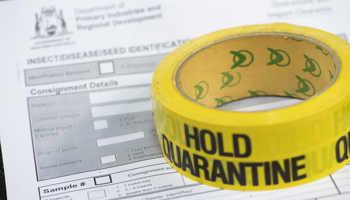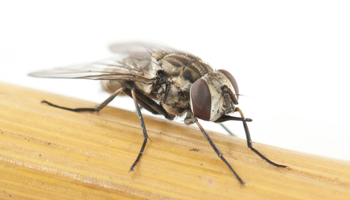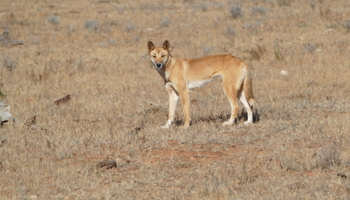What is the purpose of the BAM Act?
Western Australia (WA) is fortunate to be free of many of the major animal and plant pests and diseases that occur elsewhere. The BAM Act and associated regulations allow for the identification, control and management of both organisms and activities that may pose a biosecurity risk.
The BAM Act is designed to facilitate cooperation between government agencies, as well as with interested groups ranging from primary producers to the general public.
Specifically, the BAM Act provides the legal framework to:
- prevent new weeds, pests, and diseases from entering WA
- manage the impact and spread of those pests already present
- raise funds for biosecurity-related purposes.
In addition, the BAM Act also:
- ensures agricultural and veterinary chemicals are used safely
- establishes standards for safe and quality agricultural products.
Reviewing the legislation
The first statutory review of the BAM Act was completed by an independent panel in December 2023.
The independent panel’s review of BAM Act and consultation report can be accessed via the links below.
The WA Government’s response to review can be accessed via the link below.
WA Government response to the 2023 review
Declaration status of organisms
Central to the BAM Act is the declaration of organisms to confer a legal status upon them. That legal status dictates whether there are obligations to control an organism or prevent it from entering the state or part of the state.
Organisms can be declared to be permitted, prohibited or a declared pest. Prohibited organisms and declared pests are considered harmful and require some form of prevention or control.
The WA Organism List provides more information and the ability to search for an organism and its declaration status.
How does the BAM Act support biosecurity?
Under the BAM Act, we can stop or restrict potentially harmful organisms, including pests and diseases that infest produce and other commodities, from entering WA. This is known as border biosecurity.
Related information
Within WA, weeds, pests and diseases can be managed using the powers of the BAM Act. Depending on the organism and its impact, it may be necessary to detect, eradicate, contain or manage the pest to prevent harm or further harm.
This is known as post-border biosecurity.
The BAM Act facilitates the involvement of industry and the whole community in biosecurity.
Under the BAM Act, WA raises a Declared Pest Rate (DPR) from landholders in specific areas, and matches the funds raised from the rate dollar-for-dollar.
The combined funds are made available to Recognised Biosecurity Groups (RBGs) who provide support to landholders to manage widespread and established declared pests.
Industry funding schemes (IFS) are established under the BAM Act and utilise funds raised by producers to address biosecurity threats specific to the industry in WA.
There are three funding schemes in place for the following industries:
- grains, seed and hay
- sheep and goats
- cattle.
Related information
The BAM Act plays an important role in protecting WA’s international reputation for supplying premium and safe food and agricultural products. This is made possible by the BAM Act’s biosecurity provisions and agriculture management provisions.
The BAM Act aims to:
- safely manage the use of agricultural and veterinary chemicals
- facilitate standards for safe and quality agricultural products.
Related information
Effective biosecurity management underpins WA’s reputation as a supplier of clean, safe, high-quality food, and valuable market access and trade arrangements. It is important that everyone plays their part to maintain this status.
There are restrictions on what you can bring into WA by land, sea and air. If you are entering WA, check to make sure you are not carrying anything that is restricted.
There are also restrictions on what you can move within WA. In some cases, very specific restrictions apply to certain pests. Declared pests may not be moved into areas where they are not yet present, and some species require permits to be kept or bred.
Landowner obligations
Landowners are required to control declared pests on their land:
- Familiarise yourself with declared pests in your area.
- Report anything unusual.
- Contact your local Recognised Biosecurity Groups to see what is happening in your area.
Livestock owner obligations
Livestock owners have certain obligations under the BAM Act:
- Ensure your stock are registered and all stock movements are in accordance with the Act. Guidance on adhering to the Act is available online.
- If you suspect a disease, report it immediately to the department and to your vet.
The BAM Act is supported by a number of regulations.
- Biosecurity and Agriculture Management (Agricultural Chemical Record Keeping) Regulations 2020
- Biosecurity and Agriculture Management (Aerial Application) Regulations 2018
- Biosecurity and Agriculture Management (Declared Pest Account) Regulations 2014
- Biosecurity and Agriculture Management (Infringement Notices) Regulations 2013
- Biosecurity and Agriculture Management (Quality Assurance and Accreditation) Regulations 2013
- Biosecurity and Agriculture Management Regulations 2013
- Biosecurity and Agriculture Management (Identification and Movement of Stock and Apiaries) Regulations 2013
- Biosecurity and Agriculture Management (Agriculture Standards) Regulations 2013
- Biosecurity and Agriculture Management Industry Funding Scheme (Grains) Regulations 2010
- Biosecurity and Agriculture Management Industry Funding Scheme (Cattle) Regulations 2010
- Biosecurity and Agriculture Management Industry Funding Scheme (Sheep and Goats) Regulations 2010.
-
These include setting requirements for the import and movement of things that may pose a biosecurity risk, approving quarantine treatments, and determining fees, charges, and rates.View more about Biosecurity determinations and approvals
-
Access forms for biosecurity activities including permits and accreditation, livestock owner and beekeeper registration, and diagnostic and laboratory services, including entomology.View more about Biosecurity forms
-
Management plans establish a set of measures which must be taken for the control of a declared pest within a specified area and are issued by the Minister under the BAM Act.View more about Declared pest management plans
-
The Declared Pest Rate (DPR) and matched State funding are used to help landholders to manage widespread and established declared pests in specific areas.View more about Declared Pest Rate
-
Industry Funding Schemes (IFS) utilise funds raised by producers to address priority biosecurity threats specific to the industry in WA.View more about Industry Funding Schemes






